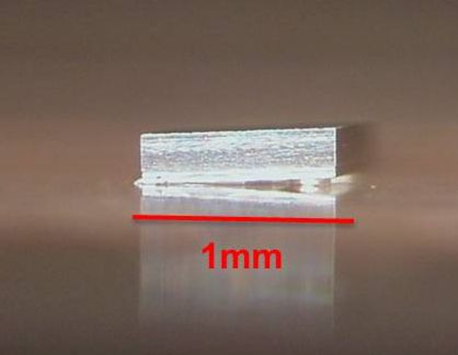
For decades, the primary joining process used in assembly of electronic components has been soldering. Low-cost equipment and easy training for assembly personnel are two advantages. Repairability and ease of visual quality inspection of soldered joints are others. However, more rigorous usage of components, ranging from medical electronics to military weapons systems, can challenge the use of soldering for assembly. A need for welded assembly methods has been identified for many applications. EWI has successfully applied welding processes for various electrical interconnections, with various clients in the electronics industry.

The needs for solder-free joints are numerous. First, traditional soldering requires a flux to chemically reduce surface oxides and promote wetting and adhesion of the solder. After soldering, the flux is required to be removed by washing, or left in-place if a “no clean” flux was used. However, the “no-clean” flux cannot be used on all applications, washing produces hazardous liquid waste, and often precious metal platings are used to aid soldering, which also adds cost to the electronic assembly.

Soldering is best applied when a large number of solder joints is required, such as traditional through-hole and surface-mount PC boards are manufactured. However, with soldering times of 1-5 seconds typical per joint, one-at-a-time soldering is slow and expensive.
Lead-free soldering has been in transition for several years but brings in additional soldering issues in some applications. These include higher soldering temperatures and tin whiskers (in very specific usage conditions). Finally, soldered joints often limit the overall device’s operating temperature to 50-70% of the solder’s melting point. Typically this translates to a limit of 150ºC for the device.
Clearly, elimination of the solder altogether brings significant advantages to manufacture of electronic components. Some of these advantages include no flux requirement, shorter time for producing a weld joint (0.010 – 0.100 s), and higher device operating temperatures. Additionally, the ability to monitor the weld process for quality assurance is a distinct advantage.
Joining processes that have been used in these applications include ultrasonic welding (including ultrasonic wire bonding), resistance welding, and laser welding. Of these, ultrasonic and resistance welding are both solid-state joining processes. This means that the metals welded are not melted, and therefore no new metal alloys (that could be prone to cracking or accelerated corrosion) are formed. Additionally, since these are both “contact” processes, weld quality data can be obtained for each weld produced, including mechanical deformation and energy input. These data can be compared to established, qualified values to provide weld acceptance information, tied back to destructive, vibration, thermal shock, and metallurgical analyses.
If you’re interested in learning how to transition a soldered connection to an interconnection with potentially faster processing speed and in-process quality assurance, please contact us at EWI.